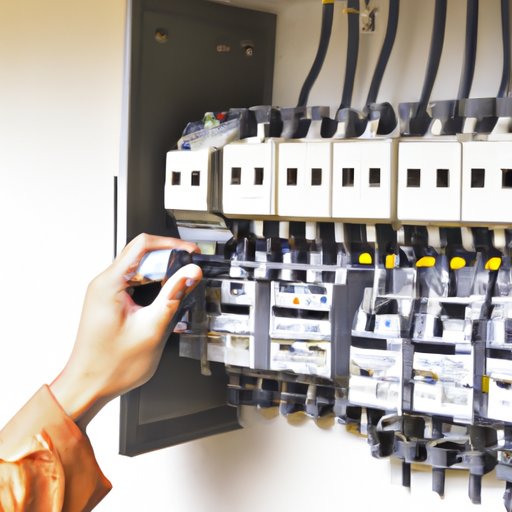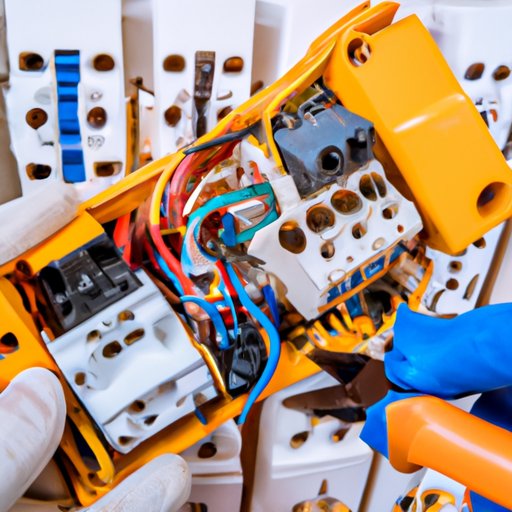Introduction
A tripped breaker is a common problem that can occur in any home. It occurs when too much electricity passes through the breaker, causing it to shut off power to a certain area of the home. This can be an inconvenience, as it can lead to power outages and other issues. Thus, it’s important to know how to fix a tripped breaker so that you can restore power and avoid further problems.

Identify the Tripped Breaker and Reset It
The first step in fixing a tripped breaker is to locate it. To do this, you will need to access your circuit breaker panel. Once you have located the tripped breaker, you should follow all safety precautions before attempting to reset it. This includes turning off any connected appliances and ensuring that all people and pets are away from the area.
Once you have taken all of the necessary safety precautions, you can reset the breaker. This is typically done by flipping the switch to the “off” position and then back to the “on” position. If the breaker trips again, you may need to call an electrician for further assistance.

Inspect the Circuit Breaker Panel for Other Issues
After resetting the breaker, you should inspect the circuit breaker panel for any other issues. Look for any signs of overloading, such as multiple breakers that are tripped or breakers that are frequently tripping. This could indicate that there is too much electricity running through the system, which can be dangerous. You should also look for any signs of corrosion or damage to the wiring.
Check the Condition of Electrical Wires
If the circuit breaker panel appears to be in good condition, you should check the condition of the electrical wires. Visually inspect them for any signs of wear and tear, such as fraying or cracking. You can also use a voltage tester to test for continuity. If the wires are damaged, they should be replaced in order to ensure the safety of your home.

Replace or Repair Faulty Appliances
If the wiring is in good condition, you should determine if any of the connected appliances are the cause of the trip. If so, you should repair or replace the faulty appliance. This will help to prevent future trips and ensure the safety of your home.
Upgrade Your Electrical System
If you find that your electrical system is not adequate enough to handle the power demands of your home, you should consider upgrading it. Check the capacity of the system to make sure it is able to meet your needs. You may also want to install additional outlets to reduce the amount of strain on the system.
Consult a Professional Electrician
If you are unable to identify the cause of the trip or are unsure how to fix the problem, you should consult a professional electrician. An electrician will be able to identify the problem and provide a solution to ensure that your home is safe and up to code. They can also offer advice on how to prevent future trips.
According to a study conducted by the U.S. Department of Energy, “Hiring a qualified electrician to check your system is always a good idea. A licensed electrician can assess the current state of your system and recommend any upgrades that may be necessary.”
Conclusion
Tripped breakers can be a nuisance, but they don’t have to be. By following the steps outlined above, you can troubleshoot the problem and restore power to your home. However, if you are unsure of the cause or are unable to fix the problem, it’s best to consult a professional electrician for assistance.
(Note: Is this article not meeting your expectations? Do you have knowledge or insights to share? Unlock new opportunities and expand your reach by joining our authors team. Click Registration to join us and share your expertise with our readers.)
